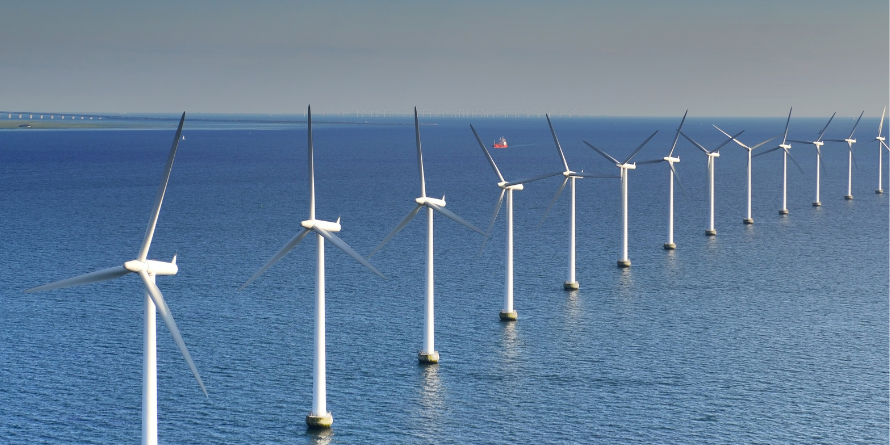Posted on: 26/03/2024
In this blog, Alex Walmsley, Head of Pricing and panel speaker of our recent Generator Revenue Streams webinar covers the factors effecting generators ranging from wholesale price movements to renewable energy subsidies and support mechanisms.
- Wholesale Price Movements:
UK Power prices have continued their decline over the past 6 months owing to a mild winter and strong gas storage stocks. Weaker structural demand has further helped prices remain soft.
The power and gas markets experienced a short sharp increase in October following the Middle East conflict, however, the impact was short lived as there were no fundamental impacts or risks to supplies.
Despite a lack of Russian gas, plentiful LNG from key suppliers USA and Qatar have ensured Europe remained well supplied over Winter, whilst the consistent and reliable flows from Norway reached record highs, alleviating any additional concerns.
Spark spreads for winter moved into negative territory as weak power demand, strong renewable production and weak Euro power prices leading to higher interconnector imports continue to pressure prices in the UK.
- Capture Prices for Wind and Solar:
Capture prices, which reflect the actual power price achieved by renewable assets, are influenced by factors like variable generation output and market dynamics.
Low wind results in significant price spikes given its intermittent nature, which are uncorrelated with power demand:
- Summer-23 - observed negative wind capture of 7.3% below Baseload (-£6.09/MWh)
- Winter-23 - has so far settled around 12.6% lower than Baseload (-£9.78/MWh)
- Discounts this Winter are similar in percentage terms to the prior Winter, despite power prices continuing to normalise.
Solar capture prices in 2023/24 have increasingly deviated from Baseload prices as Solar capacity is deployed:
- Summer-23 - observed negative capture price -7.8% vs Baseload this summer (-£6.54/MWh).
- Solar cannibalisation for Summer-23 was the largest on record (in % terms).
- Winter-23 - has so far settled around +4.6% above Baseload (+£3.61/MWh).
- Capture rates in Winter are usually driven by wider power market factors, due to minimal daylight hours for Solar.
- Renewable Subsidies and Support Mechanisms:
Nominal ROC value forecast
Forecasting ROC values showed notable increases due to high inflation, while REGO prices reflected market dynamics and demand-supply factors. OFGEM has confirmed the buyout for CP23 as £64.73/ROC. CP22 ROC supply is forecasted to fall slightly on low Q2-2023 wind output. This is slightly negated by strong biomass output.
Renewable Energy Guarantee of Origin Prices
Key factors that have affected REGO prices over the past year include:
- May – August 2023: Low wind output through the 2023 summer buoyed CP22 REGO prices.
- August - October 2023: As CP22 prices continued to rise, natural buyers began hedging forward to reduce exposure to future price risk. This supported CP23-CP25 REGO prices.
- November 2023 – February 2024 - Prices corrected from the Oct-23 highs coupled with a lot of new installed capacity coming online (e.g. Dogger Bank, Seagreen) has seen a notable correction in REGO prices.
Register for frequent updates through our preference centre. Gain access to invaluable insights and expert advice to navigate the ever-changing energy terrain and mitigate risks to your revenue.

 United States
United States Australia
Australia






